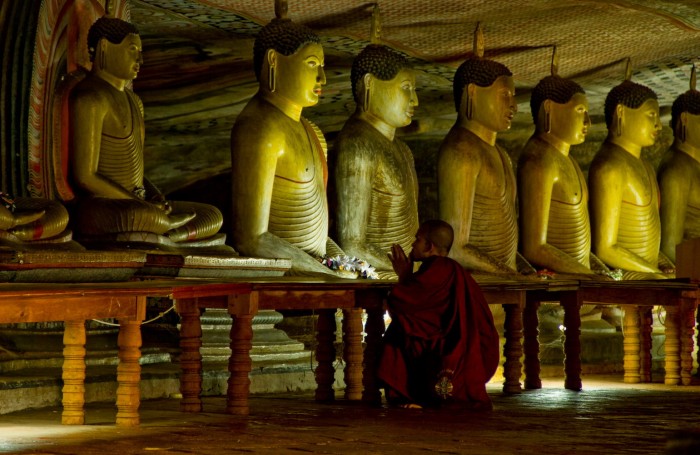Discover the Magnificent Dambulla Cave Temple: A UNESCO World Heritage Site in Sri Lanka
Dambulla Cave Temple, also known as the Golden Temple of Dambulla, is one of the most spectacular and well-preserved historical and cultural sites in Sri Lanka. Located in the central part of the island, this UNESCO World Heritage Site is a must-visit destination for tourists seeking to immerse themselves in Sri Lanka’s rich Buddhist heritage and architectural grandeur. The temple complex, nestled atop a 160-meter-high rock, offers breathtaking views, awe-inspiring cave paintings, and an atmosphere of profound spirituality.


Dambulla Cave Temple boasts a history that spans over two millennia. The complex consists of five main caves, which were transformed into a magnificent temple by King Valagamba in the 1st century BCE after he regained his throne. The king sought refuge in these caves during his exile and, upon reclaiming his kingdom, converted the caves into a sanctuary to honor the Buddha. The temple has since been a focal point of Buddhist worship and a repository of Sri Lanka’s cultural and artistic heritage.


Dambulla Cave Temple is renowned for its stunning cave art, intricate sculptures, and well-preserved murals that cover an area of 2,100 square meters. Each cave is adorned with exquisite Buddhist artwork, making the temple a masterpiece of ancient Sri Lankan art and architecture:

Cave of the Divine King (Devaraja Lena): This is the first cave visitors encounter, featuring a colossal 14-meter-long reclining Buddha statue. The cave also houses statues of deities such as Vishnu and Saman, highlighting the syncretic nature of Sri Lankan Buddhism.

Cave of the Great Kings (Maharaja Lena): The second cave, and the largest, is filled with over 50 statues of the Buddha, along with statues of two great kings, King Valagamba and King Nissanka Malla. The cave’s walls and ceiling are adorned with intricate murals depicting scenes from the Buddha’s life and important events in Sri Lankan history.

Great New Monastery (Maha Alut Vihara): This cave was added in the 18th century during the Kandyan period and features a stunning array of frescoes. The paintings, in vibrant hues, illustrate Buddhist themes and stories, showcasing the artistic advancements of the era.

Cave of the Western Temple (Paschima Vihara): This smaller cave contains a reclining Buddha statue and several seated Buddhas. The cave’s walls are decorated with delicate floral patterns and images of Buddhist deities.

Cave of the Second New Monastery (Devana Alut Vihara): The fifth cave, also from the Kandyan period, contains a collection of Buddha statues and murals that reflect the artistic style of the time. The intricate details and vibrant colors of the frescoes make this cave a visual delight.


Dambulla Cave Temple remains an active place of worship and a vibrant center of Buddhist practices. The temple hosts several Buddhist festivals and ceremonies throughout the year, drawing pilgrims and tourists alike. One of the most significant events is the Esala Perahera, celebrated in July or August, featuring colorful processions, traditional dances, and elaborate rituals to honor the Buddha.


Enhance your visit to Dambulla Cave Temple by exploring the surrounding attractions:





Dambulla Cave Temple offers a unique and enriching experience, blending historical intrigue, spiritual depth, and artistic beauty. Whether you are a history enthusiast, an art lover, or a spiritual seeker, Dambulla provides an immersive journey into Sri Lanka’s ancient past and its enduring Buddhist traditions.
Embark on a pilgrimage to Dambulla and explore the sacred caves adorned with timeless frescoes, meditate amidst the serene statues of the Buddha, and soak in the panoramic vistas from the temple’s vantage point. As a UNESCO World Heritage Site, Dambulla Cave Temple stands as a testament to the artistic and spiritual legacy of Sri Lanka, inviting visitors to delve into its profound history and cultural richness.



This is the official website of the Ministry of Tourism, Republic of Indonesia. The contents listed on this website are intended for informational purposes rather than commercial. Any displayed sale is meant as a token of partnership and will always redirect you to our partners’ sites.